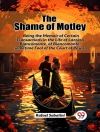William Black’s ‘Goldsmith’ presents a compelling portrait of the life and times of Oliver Goldsmith, interweaving rich biographical details with a vibrant exploration of his literary contributions. Through a blend of meticulous research and captivating narrative style, Black delves into Goldsmith’s poetic brilliance and prose achievements, highlighting key works such as ‘The Vicar of Wakefield’ and ‘She Stoops to Conquer.’ The book encapsulates the cultural and social milieu of 18th-century England, offering insights into the influences that shaped Goldsmith’s creative vision and his unique position within the canon of English literature. William Black, a distinguished writer and critic of the 19th century, drew from his profound appreciation for English literature and history in crafting this illuminating biography. His experiences within literary circles and a keen understanding of the tumultuous socio-political landscape of the time lend authenticity to his portrayal of Goldsmith, as he intricately examines the struggles and triumphs that defined the author’s life, fostering a deeper appreciation for Goldsmith’s legacy. ‘Goldsmith’ is a must-read for anyone interested in the nuances of literary history and the complexities of character that drove one of England’s most beloved writers. Black’s eloquent prose and insightful analysis not only educate but also inspire readers to explore Goldsmith’s works anew, making it an indispensable addition to the library of both scholars and casual readers alike.
Giới thiệu về tác giả
William Black remains a relatively obscure figure in the literary arena, with scant information available regarding his personal history or the breadth of his work. What is discernible, however, is that Black is known for his contribution to literature with the book titled ‘Goldsmith.’ In this particular work, one may conjecture that he pays homage to, or draws inspiration from, the life and creations of the celebrated 18th-century writer and poet, Oliver Goldsmith. Given the solitary reference to the book ‘Goldsmith, ‘ one might surmise that Black’s literary style could involve biographical or perhaps historical narrative, focused on literary figures or the impact of literature on society. Without more extensive bibliographical data or a collection of critiques, the full spectrum of Black’s stylistic nuances and thematic preoccupations remains a matter of speculation. A more comprehensive understanding of William Black’s oeuvre and influence would necessitate a deeper exploration of his literary output and the critical reception of his works.












